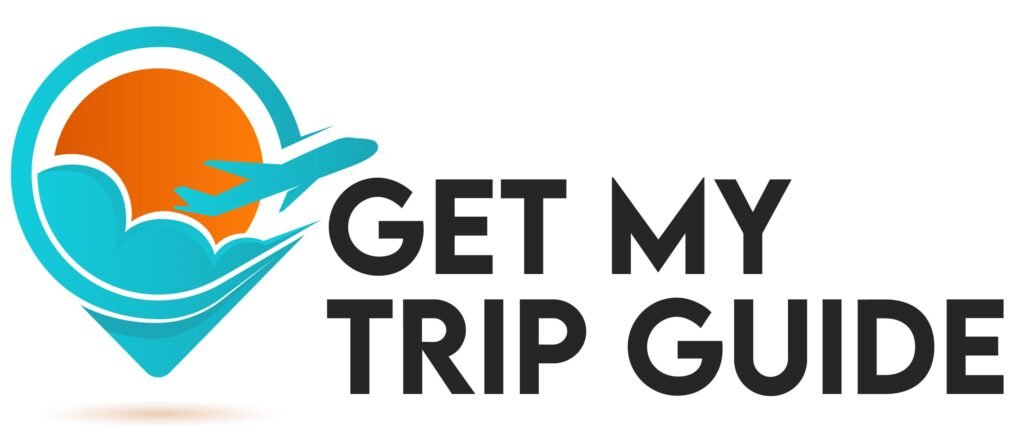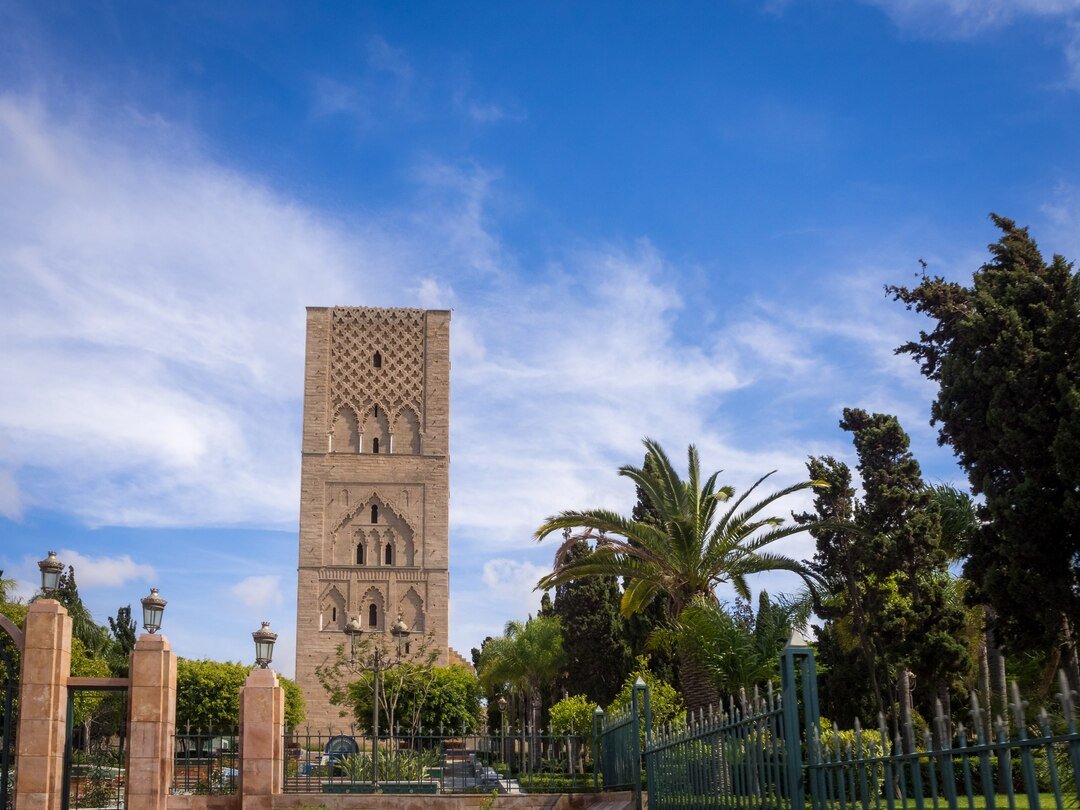Morocco doesn’t ease you in — it throws open the door and pulls you in by the heart. It’s a land of contrasts where ancient medinas breathe against the shoulder of modern cafes, where sand meets snow-capped mountains, and where every alley hides a story waiting to unfold.
Get My Trip Guide isn’t about ticking off famous sites. It’s about going deeper — letting Morocco seep into your senses, inch by inch, until you’re not just visiting — you’re feeling it.
Let’s wander through this spellbinding land.
A City Built on Whispers: Marrakech
The moment you step into Marrakech, your senses are set ablaze.
It begins in the Jemaa el-Fnaa, the city’s pulsing heart. Snake charmers sway beside juice vendors, storytellers captivate crowds with folktales, and the air simmers with the scent of grilled meats, cumin, and orange blossoms. It’s chaos. It’s rhythm. It’s Morocco, alive and unapologetic.
Slip into the souks — Marrakech’s famously tangled markets — and the world narrows into twisting paths and hidden corners. Lanterns, textiles, pottery, spices… everything glows in warm tones like the sun itself melted and spread across stalls. Sellers bargain with charm, not aggression, and if you’re lucky, you’ll be offered sweet mint tea between conversations.
The medina is a living organism — not a museum. It changes with every turn and seems to remember the footsteps of everyone who’s ever passed through.
Fez: The City That Remembers
Fez doesn’t try to be anything for tourists — and that’s what makes it breathtaking.
Inside its walls lies the world’s oldest continuously operating university, the University of al-Qarawiyyin, founded in 859 AD. You walk in its shadow, past students, shopkeepers, and calligraphers, all threading their lives through the labyrinthine tangle of Fez el-Bali.
This is not a city for maps. You will get lost. But you’ll find a mosaic-lined madrasa or a courtyard fountain that steals your breath, and you’ll realize that getting lost here is just another form of discovery.
Tanneries here date back centuries. Look from a rooftop over the Chouara Tannery and witness workers dying leather by hand in honeycomb pits. It smells strong — a mix of animal, earth, and dye — but it’s a window into a craft unchanged by time.
Fez doesn’t shine with polish. It glows with authenticity.
The Desert That Listens: Sahara
If Marrakech is a drumbeat, the Sahara is a heartbeat.
Head east, and suddenly, the land flattens. Palms appear, then vanish. Villages grow smaller. And then — dunes. Massive, golden, untouched. The Erg Chebbi and Erg Chigaga dunes are not just landscapes — they are experiences.
Ride a camel as the sun sets, casting molten shadows across the sand. Sit by a fire under stars that feel close enough to touch. The silence isn’t empty — it’s full, like the desert is listening to your thoughts, whispering back in ancient tongues.
Spend a night in a Berber tent, not for show, but for meaning. The nomadic tribes of Morocco have lived this way for centuries — with simplicity, dignity, and grace. They’ll share bread, stories, and warmth. No internet. No distractions. Just real connection.
The Atlas Mountains: Where Morocco Breathes
Not all magic is loud. Some of it is found in still peaks and green valleys, far from the horns of scooters and crowded alleys.
The High Atlas range slices Morocco in half, offering a breathtaking haven of peace. Tiny villages like Imlil perch on hillsides, wrapped in terraced gardens and walnut trees. Here, time slows. Women carry bundles of herbs. Donkeys tread quiet paths. The air smells of snow, sage, and earth.
If you hike, you’ll find wild trails leading to hidden waterfalls and ridgelines where eagles soar. If you don’t, just sitting with a cup of tea and watching Toubkal, North Africa’s highest peak, kiss the clouds is enough.
The Berber people — indigenous to these hills — are the soul of this region. Their hospitality is quiet but generous. Their culture feels ancient and proud, shaped by stone and storm, not screens or slogans.
Essaouira: The Ocean’s Pause
When the desert heat fades and your soul needs salt, head to Essaouira — Morocco’s windswept Atlantic gem.
The city is wrapped in whitewashed walls, kissed by sea spray and song. Blue boats bob in the harbor, fish markets buzz with morning catch, and the medina — smaller, calmer than others — lets you breathe while still offering every color under the sun.
Wander the ramparts where cannons still stand, watch kite surfers dance with the waves, and eat freshly grilled sardines on the beach as seagulls shout overhead.
Essaouira has long drawn artists, poets, and dreamers. There’s a calm creativity in the air, like the tide brings not just water, but ideas.
Moroccan Mosaics: A Language in Pattern
Morocco speaks in geometric poetry. In mosques, palaces, riads — you’ll find walls lined with zellige, the hand-cut tilework that tells stories through stars and symmetry.
Look close and you’ll see imperfection. That’s not a flaw — it’s faith. In traditional Islamic art, perfection is for God alone. So every pattern is an offering, not a boast.
This art of pattern is everywhere — not just museums. It’s in fountains that cool courtyards, in entryways that welcome strangers, in tea trays that carry warmth from hand to hand.
To see Morocco is to read a book written in color and craft.
Soul Through Scent: Moroccan Markets
If Morocco had a soundtrack, it would be scent.
In every market, the air is layered: cedarwood, sandalwood, cloves, dried rose petals, black soap, eucalyptus. Every stall is a doorway into ritual and remedy. Herbalists line shelves with secrets — teas for digestion, oils for dreams, powders for courage.
Pick up argan oil, still made by hand in women’s cooperatives. Watch as it’s ground from nut to gold, and understand that beauty here is not packaged — it’s crafted with history and patience.
Tea is an Invitation
In Morocco, tea isn’t just a drink. It’s a ceremony. A pause button.
Served in ornate glasses with curled mint leaves and poured high from silver pots, Moroccan mint tea is as much about grace as it is about taste. The first pour is strong, the second sweet — like a conversation unfolding.
You’ll be offered tea in shops, homes, desert camps, and mountaintop lodges. Say yes. Always say yes. It’s not about buying or business. It’s about being seen. Welcomed. Offered a moment of warmth in a world that moves too fast.
When You Leave Morocco
You don’t really leave.
Yes, you board a flight. You zip your suitcase. But Morocco stays with you — in the spice of your cooking, the curve of a lantern, the sound of drums echoing somewhere in your memory.
It teaches you that beauty can be rough-edged. That noise can be a language. That getting lost is often how you find what matters.
So come with your curiosity. Your open heart. Your willingness to see.
Morocco will do the rest.

